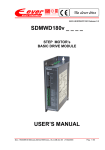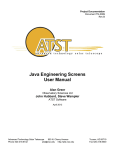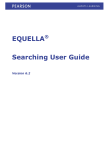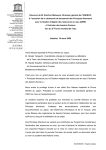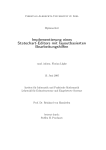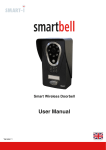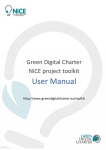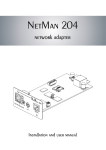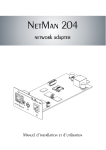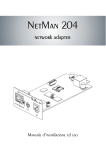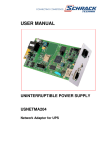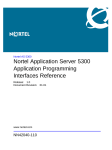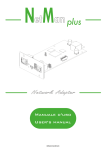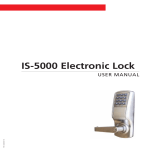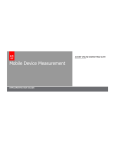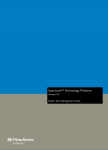Download OMD Documentation
Transcript
OMD Documentation
Release 1.0
OMD
December 17, 2014
Contents
1
2
User Guide
1.1 Parts Implemented by Kerem Adalı .
1.2 Parts Implemented by Arda Özdere .
1.3 Parts Implemented by Tamer Temizer
1.4 Parts Implemented by Haydar Şahin .
.
.
.
.
.
.
.
.
.
.
.
.
.
.
.
.
.
.
.
.
.
.
.
.
.
.
.
.
.
.
.
.
.
.
.
.
.
.
.
.
.
.
.
.
.
.
.
.
.
.
.
.
.
.
.
.
.
.
.
.
.
.
.
.
.
.
.
.
.
.
.
.
.
.
.
.
.
.
.
.
.
.
.
.
.
.
.
.
.
.
.
.
.
.
.
.
.
.
.
.
.
.
.
.
.
.
.
.
.
.
.
.
.
.
.
.
.
.
.
.
.
.
.
.
.
.
.
.
3
3
7
12
15
Developer Guide
2.1 Parts Implemented by Kerem Adalı .
2.2 Parts Implemented by Arda Özdere .
2.3 Parts Implemented by Tamer Temizer
2.4 Parts Implemented by Haydar Şahin .
.
.
.
.
.
.
.
.
.
.
.
.
.
.
.
.
.
.
.
.
.
.
.
.
.
.
.
.
.
.
.
.
.
.
.
.
.
.
.
.
.
.
.
.
.
.
.
.
.
.
.
.
.
.
.
.
.
.
.
.
.
.
.
.
.
.
.
.
.
.
.
.
.
.
.
.
.
.
.
.
.
.
.
.
.
.
.
.
.
.
.
.
.
.
.
.
.
.
.
.
.
.
.
.
.
.
.
.
.
.
.
.
.
.
.
.
.
.
.
.
.
.
.
.
.
.
.
.
27
28
31
37
39
i
ii
OMD Documentation, Release 1.0
Team OMD
Members
• Kerem Adalı
• Arda Özdere
• Tamer Temizer
• Haydar Şahin
OMD - Online Museum Database
Online Museum Database is a website for finding pretty much any information about museums. Information can
be found about Museums, Artworks, Artists, Museum Managers, Artwork Collectors and even important Visitors
of Museums.
Contents:
Contents
1
OMD Documentation, Release 1.0
2
Contents
CHAPTER 1
User Guide
OMD - Online Museum Database
Online Museum Database is a website for finding pretty much any information about museums. Information can
be found about Museums, Artworks, Artists, Museum Managers, Artwork Collectors and even important Visitors
of Museums.
1.1 Parts Implemented by Kerem Adalı
1.1.1 Artist (User View)
After clicking the “Artists” link at the top, site directs you to the page where you can find the artist database of the
OMD. General structure of the page is same with the remaning of the pages.
Names of the artists will lead you to the basic info page of the related artist. Here you can see the birth and death
years of the artist. The best button at the bottom will be explained at the Users Interaction with Artist part.
Search
Search Page brings the info of the desired artists if they exists.
Reset button resets the page to its original form.
1.1.2 Artist (Editor View)
General structure of this page is same with the User View except the Add, Delete and Edit options.
3
OMD Documentation, Release 1.0
4
Chapter 1. User Guide
OMD Documentation, Release 1.0
Add
You can reach this page from the “Add Artist” link and on this page you can simply add new artists just by filling
the empty boxes and clicking the save button.
Delete
When the “Delete Artist” link clicked OMD directs you to this page and here you can delete any artist by checking
the boxes and clicking delete. Multiple deletion is also possible.
Edit
You can open this page by clicking the edit link at the bottom of the Display Page of the artist you want to edit
and change the information just by rewriting it and clicking save button.
1.1.3 Collector (User View)
After clicking the “Collectors” link at the top, site redirects you to the page where you can find the collector
database of the OMD. General structure of the page is same with the remaning of the pages.
Names of the collectors will lead you to the basic info page of the related collector. Here you can see the favorite
artist of the chosen collector. Name of the artist will lead you to its info page.
Search
Search Page brings the info of the desired collectors if they exists.
Reset button resets the page to its original form.
1.1. Parts Implemented by Kerem Adalı
5
OMD Documentation, Release 1.0
6
Chapter 1. User Guide
OMD Documentation, Release 1.0
1.1.4 Collector (Editor View)
General structure of this page is same with the User View except the Add, Delete and Edit options.
Add
You can reach this page from the “Add Collector” link and on this page you can simply add new collectors just by
filling the empty boxes and clicking the save button.
Delete
When the “Delete Collector” link clicked OMD directs you to this page and here you can delete any collector by
checking the boxes and clicking delete. Multiple deletion is also possible.
Edit
You can open this page by clicking the edit link at the bottom of the Display Page of the collector you want to edit
and change the information just by rewriting it and clicking save button.
1.2 Parts Implemented by Arda Özdere
1.2.1 Museums
When the ‘Museums’ link is clicked on the panel, the user gets the page that displays the list of the museums. If
you are an editor, on the top right of this page there are links to the options for listing, adding, deleting or searching
the museums. If you are a basic user, you can only see the search option. The ‘Museum List’ link is directed to
the current page.
The museum list on the page consists of links that directs the user to the display page of the selected museum.
1.2. Parts Implemented by Arda Özdere
7
OMD Documentation, Release 1.0
Figure 1.1: Figure 1: Museum List Page
Figure 1.2: Figure 2: Museum Display Page
8
Chapter 1. User Guide
OMD Documentation, Release 1.0
In the display page, the user can see the information of a museum which are the name, location, opening hour,
closing hour and the manager of the museums. The ‘BEST’ button can be clicked to make it the users favourite
museum, the name of the manager can be clicked to go to that managers display page or the ‘Edit’ button can be
clicked to go to the edit page of the museum. The ‘Edit’ button is only visible to the editors, basic users are not
able to edit data.
Figure 1.3: Figure 3: Museum Edit Page
If you are an editor, edit page makes it possible to edit the data of an existing museum by re-filling the textboxes
and clicking save.
Figure 1.4: Figure 4: Museum Add Page
When the ‘Add Museum’ link is clicked the user gets the add page, where a new museum can be added by editors
after filling the textboxes and clicking ‘Save’.
Figure 1.5: Figure 5: Museum Delete Page
Also if you are an editor, when the ‘Delete Museum’ link is clicked, the user is directed to the delete page
consisting of a list of the museums with checkboxes near them and a ‘Delete’ button below. Selecting the desired
checkboxes and clicking delete makes the user able to delete the selected museums.
Whether you are an editor or a basic user, if you want to search a museum, ‘Search Museum’ link can be clicked.
After filling the textbox with the name that’s wanted to be found, ‘Search’ makes it possible for the user to find
out if there exists a museum with the given name in the database.
1.2. Parts Implemented by Arda Özdere
9
OMD Documentation, Release 1.0
Figure 1.6: Figure 6: Museum Search Page
1.2.2 Managers
When the ‘Managers’ link is clicked on the panel, the user gets the page that displays the list of the managers. If
you are an editor, on the top right of this page there are links to the options for listing, adding, deleting or searching
the managers. If you are a basic user, you can only see the search option. The ‘Manager List’ link is directed to
the current page.
Figure 1.7: Figure 7: Manager List Page
The manager list on the page consists of links that directs the user to the display page of the selected manager.
Figure 1.8: Figure 8: Manager Display Page
In the display page, the user can see the information of a manager which are the name, age, nationality and id of
the manager. Id is displayed to make it easier for the user to find the managers while adding a museum as museum
data includes a manager id. The ‘Edit’ button can be clicked to go to the edit page of the manager. The ‘Edit’
button is only visible to the editors, basic users are not able to edit data.
If you are an editor, edit page makes it possible to edit the data of an existing manager by re-filling the textboxes
and clicking save.
When the ‘Add Manager’ link is clicked the user gets the add page, where a new manager can be added by editors
after filling the textboxes and clicking ‘Save’.
10
Chapter 1. User Guide
OMD Documentation, Release 1.0
Figure 1.9: Figure 9: Manager Edit Page
Figure 1.10: Figure 10: Manager Add Page
Figure 1.11: Figure 11: Manager Delete Page
1.2. Parts Implemented by Arda Özdere
11
OMD Documentation, Release 1.0
Also if you are an editor, when the ‘Delete Manager’ link is clicked, the user is directed to the delete page
consisting of a list of the managers with checkboxes near them and a ‘Delete’ button below. Selecting the desired
checkboxes and clicking delete makes the user able to delete the selected managers.
Figure 1.12: Figure 12: Manager Search Page
Whether you are an editor or a basic user, if you want to search a manager, ‘Search Manager’ link can be clicked.
After filling the textbox with the name that’s wanted to be found, ‘Search’ makes it possible for the user to find
out if there exists a manager with the given name in the database.
1.2.3 Visitors
When the ‘Visitors’ link is clicked on the panel, the user gets the page that displays the list of the visitors. If you
are an editor, on the top right of this page there are links to the options for listing, adding, deleting or searching
the visitors. If you are a basic user, you can only see the search option. The ‘Visitor List’ link is directed to the
current page.
Figure 1.13: Figure 13: Visitor List Page
The visitor list on the page consists of links that directs the user to the display page of the selected visitor.
In the display page, the user can see the information of a visitor which are the name, age and nationality of the
visitor. Also there is a list of the visited museums, which can be clicked to reach the display pages of those
museums. Rest of the pages are pretty much the same with the managers and do not needed to be gone over again.
1.3 Parts Implemented by Tamer Temizer
1.3.1 Artworks
Artworks tab can be reached from the main navigation panel.
12
Chapter 1. User Guide
OMD Documentation, Release 1.0
Figure 1.14: Figure 14: Visitor Display Page
Main Page
This is the first page encountered when a user clicks ‘Artworks’ link on the panel. This page contains links to all
artworks on the database. If a user clicks one of those links, display page of that artwork is opened.
Panel
Artworks panel reacts differently if the user is an ordinary user or an editor. If the user is an ordinary user, he or
she can only see ‘Artwork List’ and ‘Search Artwork’ links on the panel. If the user is an editor, he or she can see
‘Add Artwork’ and ‘Delete Artwork’ links too.
Display Page
If a user clicks one of the links on the artworks main page, this page opens. This page contains type, artist, museum
and year of the clicked artwork. Artist and museum slots holds links to that particular artist’s or museum’s own
page on the website. It also shows all the users who favorited this artwork. There is a button on the top of the page
which allows the user to favorite it. There is a link at the bottom of the page, which can only be seen if the user is
an editor, that allows to edit this artwork.
List Page
This link on the panel allows the user to return to the main page of artworks tab.
1.3. Parts Implemented by Tamer Temizer
13
OMD Documentation, Release 1.0
Update Page
If a user clicks the ‘Edit’ link on the display page, this page opens. In this page there are textboxes filled with the
artwork’s current information. The editor can change these values and save. There are also links to ‘Artist Search
Page’ and ‘Museum Search Page’ to easily find a museum’s or artist’s id number as their id numbers are needed
while editting.
Add Page
This page opens when an editor clicks ‘Add Artwork’ link on the panel. This page contains textboxes for title,
type, artist id, museum id and year, like the update page. The editor can fill these textboxes and click save button
to add a new artwork.
Delete Page
This page opens when an editor clicks ‘Delete Artwork’ link on the panel. This page contains the list of all
artworks in the database with a checkbox next to their title. The editor can check these checkboxes and click
delete button to delete checked artworks.
Search Page
This page opens when a user clicks ‘Search Artwork’ link on the panel. This is the only link on the panel that can
be reached by ordinary users. In this page the user can type a text in the textbox and search for artworks starting
with that text. If the artwork doesn’t have a link to a museum or an artist, that slot is showed as ‘?’. If the user
is an editor, he or she will also see the id of the artwork next to its title. The user can reset the search by clicking
reset button. This will allow he or she to see the full list again.
14
Chapter 1. User Guide
OMD Documentation, Release 1.0
1.4 Parts Implemented by Haydar Şahin
1.4.1 Login & Signup
When am user enters to omd-dev.bluemix.net, he or she will firstly see a login screen.
Figure 1.15: Figure.1: User Login Page
User
If user does have an account in the system, he or she can easily log in with his/her username and password.
However, if user doesn’t have any account on the system, the user should navigate to sign up page.
In the sign up page, user should fill up some information which is wanted by the website. These informations are:
username, password, e-mail and birthday. After entering these information, the user can easily log in with his/her
username and password form the login screen.
Editor
If the user is an editor, user should navigate to editor login page to log in as editor. No user can sign up as editor,
editors are employees of omd-dev.bluemix.net.
Admin
If the user is an admin, user should navigate to admin login page to log in as admin. No user can signup as admin,
only the admin with root privelege, which has a priority number 0, can only add or remove admins and editors.
1.4. Parts Implemented by Haydar Şahin
15
OMD Documentation, Release 1.0
Figure 1.16: Figure.2: Signup Navigation Panel
Figure 1.17: Figure.3: User Sign Up Page
Figure 1.18: Figure.4: Editor Login Page
Figure 1.19: Figure.5: Admin Login Page
16
Chapter 1. User Guide
OMD Documentation, Release 1.0
1.4.2 Users
After am user is logged in from the User Login Page, he/she will enter to homepage. In the homepage, there
is an welcome screen. After that moment, user can select which topic he/she wants to get information from the
navigation panel. The topics are Museums, Managers, Visitors, Artists, Collectors and Artworks. Moreover, the
user can logout from the logout link from the navigation panel.
Figure 1.20: Figure.6: Main Navigation Panel
Interaction with Museums
In the museums page, an user can see the list of the museums and if he/she want to search museums; after selecting
the ‘Search Museum’ link, he/she can search museums with their names from the search bar in the page. Users can
see details of museums by clicking on their names in the list. After they click on the name of a specific museum,
a detailed page of that museum will be shown to user. Moreover the user can make this museum his/her favourite
museum by clicking ‘Best’ button.
Figure 1.21: Figure.7: Museum Best Button
Detailed information is given under the Museums Page section of User Manual.
Interaction with Managers
In the managers page, an user can see the list of the managers and if he/she want to search managers; after selecting
the ‘Search Manager’ link, he/she can search managers with their names from the search bar in the page. Users
can see details of managers by clicking on their names in the list. After they click on the name of a specific
manager, a detailed page of that manager will be shown to user. Detailed information is given under the Managers
Page section of User Manual.
1.4. Parts Implemented by Haydar Şahin
17
OMD Documentation, Release 1.0
Interaction with Visitors
In the visitors page, an user can see the list of the visitors and if he/she want to search visitors; after selecting the
‘Search Visitor’ link, he/she can search visitors with their names from the search bar in the page. Users can see
details of visitors by clicking on their names in the list. After they click on the name of a specific visitor, a detailed
page of that visitor will be shown to user. Detailed information is given under the Visitors Page section of User
Manual.
Interaction with Artists
In the artists page, an user can see the list of the artists and if he/she want to search artists; after selecting the
‘Search Artist’ link, he/she can search artists with their names from the search bar in the page. Users can see
details of artists by clicking on their names in the list. After they click on the name of a specific artist, a detailed
page of that artist will be shown to user. Moreover the user can make this artist his/her favourite artist by clicking
‘Best’ button.
Figure 1.22: Figure.8: Artist Best Button
Detailed information is given under the Artists Page section of User Manual.
Interaction with Collectors
In the collectors page, an user can see the list of the collectors and if he/she want to search collectors; after
selecting the ‘Search Collector’ link, he/she can search collectors with their names from the search bar in the
page. Users can see details of collectors by clicking on their names in the list. After they click on the name of a
specific collector, a detailed page of that collector will be shown to user. Detailed information is given under the
Collectors Page section of User Manual.
18
Chapter 1. User Guide
OMD Documentation, Release 1.0
Interaction with Artworks
In the artworks page, an user can see the list of the artworks and if he/she want to search artworks; after selecting
the ‘Search Artwork’ link, he/she can search artworks with their names from the search bar in the page. Users can
see details of artworks by clicking on their names in the list. After they click on the name of a specific artwork,
a detailed page of that artwork will be shown to user. Moreover the user can make this artwork his/her favourite
artwork by clicking ‘Best’ button. Detailed information is given under the Artworks Page section of User Manual.
Figure 1.23: Figure.9: Artwork Best Button
1.4.3 Editors
After an editor is logged in from the Editor Login Page, he/she will enter to homepage. In the homepage, there
is an welcome screen. After that moment, user can select which topic he/she wants to get information from the
navigation panel. The topics are Museums, Managers, Visitors, Artists, Collectors and Artworks. Moreover, the
user can logout from the logout link from the navigation panel.
Interaction with Museums
In the museums page, an editor can see the list of the museums and search museums like users. However, editors
can add, remove and edit museums too. Detailed information is given under the Museums Page section of User
Manual.
Interaction with Managers
In the managers page, an editor can see the list of the managers and search managers like users. However, editors
can add, remove and edit managers too. Detailed information is given under the Managers Page section of User
Manual.
1.4. Parts Implemented by Haydar Şahin
19
OMD Documentation, Release 1.0
Interaction with Visitors
In the visitors page, an editor can see the list of the visitors and search visitors like users. However, editors can
add, remove and edit visitors too. Detailed information is given under the Visitors Page section of User Manual.
Interaction with Artists
In the artists page, an editor can see the list of the artists and search artists like users. However, editors can add,
remove and edit artists too. Detailed information is given under the Artists Page section of User Manual.
Interaction with Collectors
In the collectors page, an editor can see the list of the collectors and search collectors like users. However, editors
can add, remove and edit collectors too. Detailed information is given under the Collectors Page section of User
Manual.
Interaction with Artworks
In the artworks page, an editor can see the list of the artworks and search artworks like users. However, editors
can add, remove and edit artworks too. Detailed information is given under the Artworks Page section of User
Manual.
1.4.4 Admins
After an user is logged in from the Admin Login Page, he/she will firstly see the user list. After that page the
admin can select firstly what operation to do, and then select for which user class he/she want to do operation
from the admin panel. There are four types of operations, which are ‘List’,’Search’,’Insert’,’Delete’ and 3 type of
users ‘User’,’Editor’,’Admin’.
Figure 1.24: Figure.10: Admin Panel to Select Operation
Figure 1.25: Figure.11: Admin Panel to Select User Type
There is two type of admins. One of them has root privileges. The others doesn’t have root privileges. Admins
with root privileges can see the password of users, editors and admins. However admins without root privileges
can’t see the password of users, editors and admins.
Interaction with Users
Admins can list, search, insert and remove users.
Moreover Admins can follow Users, however this is not an observable feature.
Interaction with Editors
Admins can list, search, insert and remove editors.
20
Chapter 1. User Guide
OMD Documentation, Release 1.0
Figure 1.26: Figure.12: User List Page
Figure 1.27: Figure.13: User Search Page
Figure 1.28: Figure.14: User Insert Page
Figure 1.29: Figure.15: User Delete Page
1.4. Parts Implemented by Haydar Şahin
21
OMD Documentation, Release 1.0
Figure 1.30: Figure.16: User Detail Page
Figure 1.31: Figure.17: Editor List Page
Figure 1.32: Figure.18: Editor Search Page
22
Chapter 1. User Guide
OMD Documentation, Release 1.0
Figure 1.33: Figure.19: Editor Insert Page
Figure 1.34: Figure.20: Editor Delete Page
1.4. Parts Implemented by Haydar Şahin
23
OMD Documentation, Release 1.0
Interaction with Admins
Admins can list, search, insert and remove admins.
Figure 1.35: Figure.21: Admin List Page
Figure 1.36: Figure.22: Admin Search Page
24
Chapter 1. User Guide
OMD Documentation, Release 1.0
Figure 1.37: Figure.23: Admin Insert Page
Figure 1.38: Figure.24: Admin Delete Page
1.4. Parts Implemented by Haydar Şahin
25
OMD Documentation, Release 1.0
26
Chapter 1. User Guide
CHAPTER 2
Developer Guide
Our Database does exist of 12 tables, which are:
• Admin
• ARTIST
• ARTWORK
• COLLECTOR
• Editor
• EditorTopic
• FAVUSERS
• MANAGER
• MUSEUM
• User
• VISITING
• VISITOR
Figure 2.1: Figure.1: E/R Diagram of the database
27
OMD Documentation, Release 1.0
2.1 Parts Implemented by Kerem Adalı
2.1.1 Database
Artist Table
CREATE TABLE ARTIST(
ID INTEGER PRIMARY KEY AUTOINCREMENT,
FULLNAME varchar(80) UNIQUE,
BORN INTEGER,
DEATH INTEGER
);
Artist table has 4 attributes. ID is the primary key value which is auto incremented when a new artist is added.
Collector Table
CREATE TABLE COLLECTOR(
ID INTEGER PRIMARY KEY AUTOINCREMENT,
NAME varchar(80) UNIQUE,
FAVARTIST INTEGER REFERENCES ARTIST ON DELETE SET NULL
);
Collector table has 3 attributes. ID is the primary key value which is auto incremented when a new collector is
added.FAVARTIST is a primary key to the Artist Table which is set to NULL on a related deletion at Artist Table.
Entity / Relationship Diagram
• There is a 1:1 relationship between artist and collector.
2.1.2 Coding
Artist
Artist is the class of the painters, sculptors etc.
Class
public class Artist {
private
private
private
private
28
Integer ID = null;
String fullname = null;
Integer born = null;
Integer death = null;
Chapter 2. Developer Guide
OMD Documentation, Release 1.0
//Methods
}
Artist class has 4 attributes which are ID, fullname, birth and death years.
Methods
Standart get/set methods.
Interface
public interface IArtistCollection {
public List<Artist> getArtists();
public void addArtist(Artist artist);
public void deleteArtist(Artist artist);
public void updateArtist(Artist artist);
public Artist getArtist(Artist artist);
public List<Artist> searchArtist(String search);
public Artist getArtistWithID(Integer id);
}
Collection Methods
• getArtists(): Gets the info about artists and returns a linked list of artists.
• addArtist(Artist artist): Adds artist to the artist table.
• deleteArtist(Artist artist): Deletes artist from the artist table.
• updateArtist(Artist artist): Updates artist variables at the table.
2.1. Parts Implemented by Kerem Adalı
29
OMD Documentation, Release 1.0
• getArtist(Artist artist): Searches artist by its name and returns a artist.
• searchArtist(String search): Searches artist by its name and returns a linked list of artists.
• getArtistWithID(Integer id): Searches artist by its ID and returns a artist.
Collector
Collector is the class for collectors at the database.
Class
public class Collector {
private Integer ID = null;
private String name = null;
private Integer favartist = null;
//Methods
}
Collector class has 3 attributes which are ID, name and favartist( Id of the favorite artist ).
Methods
Standart get/set methods and
public class Artist {
//Attributes
//Get/Set Methods
public void setFavArtist(Integer afav_artist) {...}
public Integer getFavArtist() {...}
}
• setFavArtist: Sets the favorite artist of the collector.
• getFavArtist: Returns the id of the favorite artist of that collector.
Interface
public interface ICollectorCollection {
public List<Collector> getCollectors();
public void addCollector(Collector collector);
public void deleteCollector(Collector collector);
public void updateCollector(Collector collector);
public Collector getCollector(Collector collector);
public List<Collector> searchCollector(String search);
public Collector getCollectorWithID(Integer id);
30
Chapter 2. Developer Guide
OMD Documentation, Release 1.0
}
Collection Methods
• getCollectors(): Gets the info about collectors and returns a linked list of collectors.
• addCollector(Collector collector): Adds collector to the collector table.
• deleteCollector(Collector collector): Deletes collector from the collector table.
• updateCollector(Collector collector): Updates collector variables at the table.
• getCollector(Collector collector): Searches collector by its name and returns a collector.
• searchCollector(String search): Searches collector by its name and returns a linked list of collectors.
• getCollectorWithID(Integer id): Searches collector by its ID and returns a collector.
2.2 Parts Implemented by Arda Özdere
2.2.1 Database Design
MUSEUM Table
CREATE TABLE MUSEUM(
ID INTEGER PRIMARY KEY NOT NULL,
TITLE VARCHAR(80) UNIQUE,
LOCATION VARCHAR(80),
OPENING VARCHAR(5),
CLOSING VARCHAR(5),
MANAGERID INTEGER REFERENCES MANAGER ON DELETE SET NULL);
Museum table has 6 attributes. Id is the primary key which can not take a null value and auto incremented when
a new museum is added. Title is the name of the museum, location is the location of the museum. Opening and
closing hours are restricted by 5 characters. Manager id is a foreign key to the MANAGER table, which is set to
null on a deletion.
Figure 2.2: Museum Table
MANAGER Table
CREATE TABLE MANAGER(
ID INTEGER PRIMARY KEY NOT NULL,
NAME VARCHAR(40),
AGE INTEGER,
NATIONALITY VARCHAR(20));
Manager table has 4 attributes. The id of the manager is the primary key which can not be null and is auto
incremented in each addition. Also the name, age and nationality of the managers are included.
2.2. Parts Implemented by Arda Özdere
31
OMD Documentation, Release 1.0
Figure 2.3: Manager Table
VISITOR Table
CREATE TABLE VISITOR(
ID INTEGER PRIMARY KEY NOT NULL,
NAME VARCHAR(40),
AGE INTEGER,
NATIONALITY VARCHAR(20));
Visitor table has 4 attributes. The id of the visitor is the primary key which can not be null and is auto incremented
in each addition. Also the name, age and nationality of the visitors are included.
Figure 2.4: Visitor Table
VISITING Table
CREATE TABLE VISITING(
VISITORID INTEGER REFERENCES VISITOR ON DELETE CASCADE,
MUSEUMID INTEGER REFERENCES MUSEUM ON DELETE CASCADE,
PRIMARY KEY ( VISITORID, MUSEUMID));
Visiting table has 2 attributes. These are both foreign keys. One references the visitor table and one references
the museum table. Both are set to cascade on any deletions. The primary key is a combination of both of these
foreign keys.
Entity / Relationship Diagram
Relationships
• Museum-Manager : 1 to 1
• Museum-Artwork : 1 to 1
• Museum-User : 1 to 1
• Museum-Visiting : n to n
• Visitor-Visiting : n to n
• Visitor-Museum : 1 to n
32
Chapter 2. Developer Guide
OMD Documentation, Release 1.0
Figure 2.5: Visiting Table
Figure 2.6: E/R Diagram
2.2. Parts Implemented by Arda Özdere
33
OMD Documentation, Release 1.0
2.2.2 Code
Museum Class
public class Museum {
private
private
private
private
private
private
String title = null;
String location = null;
String openingHour = null;
String closingHour = null;
Integer id = null;
Integer managerid = null;
//getters and setters
}
• title: Name of the museum
• id: ID of the museum
• openingHour: Opening hour of the museum
• closingHour: Closing hour of the museum
• location: Location of the museum
• managerid: Manager ID of the museum (Foreign key)
Museum JDBC Operations
The query of the operations are commented below the Java functions.
public interface IMuseumCollection {
public List<Museum> getMuseums();
//"SELECT * FROM MUSEUM"
public void addMuseum(Museum museum);
//"INSERT INTO MUSEUM (TITLE, LOCATION, OPENING, CLOSING, MANAGERID)
//
VALUES (?, ?, ?, ?, ?)"
public void updateMuseum(Museum museum);
//"UPDATE MUSEUM SET TITLE = ?, LOCATION = ?, OPENING = ?,
//
CLOSING = ?, MANAGERID = ? WHERE (ID = ?)"
public void deleteMuseum(Museum museum);
//"DELETE FROM MUSEUM WHERE (ID = ?)"
public Museum getMuseum(Museum museum);
//"SELECT * FROM MUSEUM WHERE TITLE = ’" + museum.getTitle() + "’"
public Museum getMuseumWithID(Integer id);
//"SELECT * FROM MUSEUM WHERE (ID = ?)"
public List<Museum> searchMuseums(String search);
//"SELECT * FROM MUSEUM WHERE TITLE LIKE ’" + search + "%’"
}
• getMuseums(): Returns a linked list of all museums.
• addMuseum(Museum museum): Adds a museum to the museum table.
34
Chapter 2. Developer Guide
OMD Documentation, Release 1.0
• deleteMuseum(Museum museum): Deletes the desired museum from the museum table.
• updateMuseum(Museum museum): Updates the information of a museum with its new values.
• getMuseum(Museum museum): Searches a museum by its name and returns it.
• searchMuseum(String search): Searches a museum with a string like its name and returns a linked list of
museums.
• getMuseumWithID(Integer id): Searches a museum by its ID and returns it.
Manager Class
public class Manager {
private String name = null;
private String nationality = null;
private Integer age = null;
private Integer id = null;
//getters and setters
}
• name: Name of the manager
• nationality: Nationality of the manager
• age: Age of the manager
• id: ID of the manager
Manager JDBC Operations
The query of the operations are commented below the Java functions.
public interface IManagerCollection {
public List<Manager> getManagers();
//"SELECT * FROM MANAGER"
public void addManager(Manager manager);
//"INSERT INTO MANAGER (NAME, AGE, NATIONALITY) VALUES (?, ?, ?)"
public void updateManager(Manager manager);
//"UPDATE MANAGER SET NAME = ?, AGE = ?, NATIONALITY = ? WHERE (ID = ?)"
public void deleteManager(Manager manager);
//"DELETE FROM MANAGER WHERE (ID = ?)"
public Manager getManager(Manager manager);
//"SELECT * FROM MANAGER WHERE NAME = ’" + manager.getName() + "’"
public Manager getManagerWithID(Integer id);
//"SELECT * FROM MANAGER WHERE (ID = ?)"
public List<Manager> searchManagers(String search);
//"SELECT * FROM MANAGER WHERE NAME LIKE ’" + search + "%’"
}
• getManagers(): Returns a list of all managers.
• addManager(Manager manager): Adds a manager to the manager table.
2.2. Parts Implemented by Arda Özdere
35
OMD Documentation, Release 1.0
• deleteManager(Manager manager): Deletes the desired manager from the manager table.
• updateManager(Manager manager): Updates the information of a manager with its new values.
• getManager(Manager manager): Searches a manager by its name and returns it.
• searchManager(String search): Searches a manager with a string like its name and returns a list of managers.
• getManagerWithID(Integer id): Searches a manager by its ID and returns it.
Visitor Class
public class Visitor {
private String name = null;
private String nationality = null;
private Integer age = null;
private Integer id = null;
//getters and setters
}
• name: Name of the visitor
• nationality: Nationality of the visitor
• age: Age of the visitor
• id: ID of the visitor
Visitor JDBC Operations
The query of the operations are commented below the Java functions.
public interface IVisitorCollection {
public List<Visitor> getVisitors();
//"SELECT * FROM VISITOR"
public void addVisitor(Visitor visitor);
//"INSERT INTO VISITOR (NAME, AGE, NATIONALITY) VALUES (?, ?, ?)"
public void updateVisitor(Visitor visitor);
//"UPDATE VISITOR SET NAME = ?, AGE = ?, NATIONALITY = ? WHERE (ID = ?)"
public void deleteVisitor(Visitor visitor);
//"DELETE FROM VISITOR WHERE (ID = ?)"
public Visitor getVisitor(Visitor visitor);
//"SELECT * FROM VISITOR WHERE NAME = ’"
public Visitor getVisitorWithID(Integer id);
//"SELECT * FROM VISITOR WHERE (ID = ?)"
public List<Visitor> searchVisitors(String search);
//"SELECT * FROM VISITOR WHERE NAME LIKE ’" + search + "%’"
public List<Museum> searchVisitedMuseumsWithVisitorId(Integer VisitorId);
//"SELECT * FROM MUSEUM, VISITING, VISITOR WHERE ( (VISITORID=VISITOR.ID) AND
//
(MUSEUMID=MUSEUM.ID) AND (VISITORID = " + VisitorId + "))"
}
36
Chapter 2. Developer Guide
OMD Documentation, Release 1.0
• getVisitors(): Returns a list of all visitors.
• addVisitor(Visitor visitor): Adds a visitor to the visitor table.
• deleteVisitor(Visitor visitor): Deletes the desired visitor from the visitor table.
• updateVisitor(Visitor visitor): Updates the information of a visitor with its new values.
• getVisitor(Visitor visitor): Searches a visitor by its name and returns it.
• searchVisitor(String search): Searches a visitor with a string like its name and returns a list of visitors.
• getVisitorWithID(Integer id): Searches a visitor by its ID and returns it.
• searchVisitedMuseumsWithVisitorId(Integer VisitorId): Returns a list of the visited museums of the
visitor with the given ID.
2.3 Parts Implemented by Tamer Temizer
2.3.1 Database Design
ARTWORK Table
CREATE TABLE ARTWORK(
ID INTEGER PRIMARY KEY AUTOINCREMENT,
ATITLE varchar(80),
ATYPE varchar(80),
ARTISTNO INTEGER REFERENCES ARTIST ON DELETE SET NULL,
MUSEUMNO INTEGER REFERENCES MUSEUM ON DELETE SET NULL,
YEAR varchar(80));
Artwork table has 6 attributes. ID is the primary key which can’t be null and increments when a new artwork
is added. ATITLE is the title of the artwork it is a varchar with 80 characters (Mona Lisa, Starry Night etc.).
ATYPE is the type of the artwork it is a varchar with 80 characters (painting, sculpture etc.). MUSEUMNO and
ARTISTNO are integer foreign keys that references MUSEUM table and ARTIST tables respectively. They hold
IDs of a museum and artist and they are used to create links to that page. If the stored artist or museum is deleted,
ARTISTNO or MUSEUMNO becomes NULL. YEAR is the year artwork was created, it is a varchar with 80
characters. YEAR isn’t an integer because creation year can be an interval or unknown.
Entity / Relationship Diagram
Relationships
• Artwork - Museum : 1 to 1
• Artwork - Artist : 1 to 1
• Artwork - User : 1 to n
2.3.2 Code
Artwork Class
2.3. Parts Implemented by Tamer Temizer
37
OMD Documentation, Release 1.0
public class Artwork {
private
private
private
private
private
private
String title = null;
String type = null;
Integer artist = null;
Integer museum = null;
String year = null;
Integer ID = null;
}
Getters and setters are omitted as they are trivial.
• title: Title of the artwork.
• type: Type of the artwork.
• artist: Creator of the artwork. It is a foreign key that references ARTIST table.
• museum: Museum of the artwork. It is a foreign key that references MUSEUM table.
• year: Year this artwork was created.
• id: ID of the artwork. This is unique and used as a primary key in the ARTWORK table.
Artwork JDBC Operations
The query of the operations can be seen below the Java functions.
public interface IArtworkCollection {
public List<Artwork> getArtworks();
//SELECT * FROM ARTWORK
public List<String> getFavorited(Integer id);
//SELECT * FROM User WHERE (ARTWORKID = ?)
public void addArtwork(Artwork anArtwork);
//INSERT INTO ARTWORK (ATITLE, ATYPE, ARTISTNO, MUSEUMNO, YEAR ) VALUES (?, ?, ?, ?, ?)
public void updateArtwork(Artwork anArtwork);
//UPDATE ARTWORK SET ATITLE = ?, ATYPE = ?, ARTISTNO = ?, MUSEUMNO = ?, YEAR = ? WHERE (ID = ?
public void deleteArtwork(Artwork anArtwork);
//DELETE FROM ARTWORK WHERE (ID = ?)
38
Chapter 2. Developer Guide
OMD Documentation, Release 1.0
public List<Artwork> searchArtworks(String search);
//SELECT * FROM ARTWORK WHERE ATITLE LIKE ’" + search + "%’"
public Artwork getArtworkWithID(Integer id);
//SELECT * FROM ARTWORK WHERE (ID = ?)
}
Usage of Artwork JDBC Operations
• getArtworks(): Returns all artworks in the ARTWORK table. Used in listing all artworks.
• getFavorited(Integer id): Returns all users who favorited the artwork with given id. Used in display page
to list all users favorited that artwork.
• addArtwork(Artwork anArtwork): Adds the given artwork to ARTWORK table. Used in ‘Add Artwork’
page.
• updateArtwork(Artwork anArtwork): Updates an artwork. Used in update page that is reached by clicking edit on display page.
• deleteArtwork(Artwork anArtwork): Deletes the given artwork from ARTWORK table. Used in ‘Delete
Artwork’ page.
• searchArtworks(String search): Lists all artworks starting with the given string. Used in ‘Search Artwork’
page.
• getArtworkWithID(Integer id): Returns the artwork with the given ID. Used for cooperation with other
tables.
2.4 Parts Implemented by Haydar Şahin
2.4.1 Database Design
There are three types of users in our website, and we have 5 tables in according to store these type of users and
some of their attributes.
User
User Table
User Table stores information of user accounts.
Structure of User Table
Figure 2.7: Figure.1: Structure of User Table
USERNAME is primary key.
2.4. Parts Implemented by Haydar Şahin
39
OMD Documentation, Release 1.0
MUSEUMID, ARTISTID, ARTWORKID are foreign keys to MUSEUM, ARTIST, ARTWORK tables. This
relation is needed for favourite museum, artist and artwork feature of users.
CREATE TABLE User(
USERNAME varchar(80) PRIMARY KEY,
PASSWORD varchar(80) NOT NULL,
EMAIL varchar(80) NOT NULL,
BIRTHDAY DATE NOT NULL,
MUSEUMID INTEGER REFERENCES MUSEUM ON DELETE SET NULL,
ARTISTID INTEGER REFERENCES ARTIST ON DELETE SET NULL,
ARTWORKID INTEGER REFERENCES ARTWORK ON DELETE SET NULL)
MUSEUMID, ARTISTID, ARTWORKID has attribute ON DELETE SET NULL, because when an user has a
museum/artist/artwork as favourite museum/artist/artwork, that museum/artist/artwork can be deleted.
E/R Diagram
Figure 2.8: Figure.2: User Table E/R Diagram with MUSEUM, ARTIST and ARTWORK Tables.
All of these three foreign keys, are ‘SET TO NULL ON DELETE’. With this feature, we disable any problem
which can be occured by deleting museums, artist or artworks.
All Users can have only one favourited museum, artist or artwork. This will create a 1-n relation between User
Table and MUSEUM, ARTIST and ARTWORK tables.
Editor
Editor Table
Editor Table stores information of editor accounts.
Structure of Editor Table
Figure 2.9: Figure.3: Structure of Editor Table
USERNAME is primary key.
CREATE TABLE Editor(
USERNAME varchar(80) PRIMARY KEY,
PASSWORD varchar(80) NOT NULL,
EDITNO INTEGER DEFAULT 0)
40
Chapter 2. Developer Guide
OMD Documentation, Release 1.0
EDITNO stores to total edit number of editors. That’s why it is set to 0 as default. However after each edit, this
value will increment.
EditorTopic Table
Editors do have topic/topics to be responsible of. This table stores the responsible topics of editors.
Structure of EditorTopic Table
Figure 2.10: Figure.4: Structure of EditorTopic Table
USERNAME is both primary and foreign key.
CREATE TABLE EditorTopic(
USERNAME varchar(80) REFERENCES Editor ON DELETE CASCADE,
TOPIC varhcar(80),
PRIMARY KEY ( USERNAME ))
USERNAME is ON DELETE CASCADE, because if when an editor is removed from Editor Table, the same
editor must be deleted from EditorTopic table.
E/R Diagram
Figure 2.11: Figure.5: Editor E/R Diagram with Editor Table and EditorTopic Table.
Every editor can have only one topic, which are specific to them. This will create a 1-1 relation between Editor
table and EditorTopic Table.
Admin
Admin Table
Admin Table stores information of admin accounts.
Structure of Admin Table
Figure 2.12: Figure.6: Structure of Admin Table
USERNAME is the primary key.
2.4. Parts Implemented by Haydar Şahin
41
OMD Documentation, Release 1.0
PRIORITY is just an integer value, which shows the privilege of admins. 0 means root privilege, 1 means normal
privilege.
FAVUSERS Table
FAVUSERS Table stores the favourited users of admins.
Structure of FAVUSERS Table
Figure 2.13: Figure.7: Structure of FAVUSERS Table
E/R Diagram
Every admin can favourite more than one users and one user can be favourited by more than one admin. This will
create a n-n relation between Admin table and FAVUSERS Table.
2.4.2 Code
Base User
Base User Class
Base User Class is the super class of the other user classes. This class is needed because we store the user, which
has logged in. However if we think that there are three types of users, the best way to store these users in one
variable is creating a super class for these users.
Base User Class doesn’t have any table, however it is implemented in Java Code.
public class BaseUser {
private String username = null;
private String password = null;
}
BaseUser class just has two attributes, which are username and password.
User
User Class
User Class is the class which is implemented for ordinary users.
User Class inherits BaseUser class, and has more attributes then BaseUser class.
public class User extends BaseUser {
private String email = null;
private Integer bestArtist = null;
private Integer bestMuseum = null;
private Integer bestArtwork = null;
private String birthday = null;
}
42
Chapter 2. Developer Guide
OMD Documentation, Release 1.0
Figure 2.14: Figure.8: Admin E/R Diagram with Admin Table and FAVUSERS Table.
2.4. Parts Implemented by Haydar Şahin
43
OMD Documentation, Release 1.0
User JDBC Codes
There are 10 functions, which are query for User Table.
public interface IUserCollection {
public List<User> getUsers();
public void addUser(User user);
public void deleteUser(User user);
public List<User> searchUsers(String search);
public void updateArtist(User user, Artist artist);
public void updateMuseum(User user, Museum museum);
public void updateArtwork(User user, Artwork artwork);
public Boolean existsUser(User user);
public Boolean existsUsername(User user);
public User getUser(User user);
}
• public List<User> getUsers(): Returns the whole list of Users with a simple SELECT query.
• public void addUser(User user): Inserts the given User to the User Table with a simple INSERT INTO
query.
• public void deleteUser(User user): Removes the given User from the User table with a simple DELETE
query.
• public List<User> searchUsers(String search): Searches users, whose name starts with the given string,
with a simple SELECT query.
• public void updateArtist(User user, Artist artist): Updates the ARTISTID column of User Table.
• public void updateMuseum(User user, Museum museum);: Updates the MUSEUMID column of User
Table.
• public void updateArtwork(User user, Artwork artwork): Updates the ARTWORKID column of User
Table.
• public Boolean existsUser(User user): Returns ‘1’ if there is an user with the given users name and
password, otherwise returns ‘0’.
• public Boolean existsUsername(User user): Returns ‘1’ if there is an user with the given users name,
otherwise returns ‘0’.
• public User getUser(User user): Returns the information of User, which is sent to this function as parameter.
Editor
Editor Class
Editor Class is the class which is implemented for ordinary users.
Editor Class inherits BaseUser class, and has more attributes then BaseUser class.
public class Editor extends BaseUser {
private Integer totaleditnumber = 0;
44
Chapter 2. Developer Guide
OMD Documentation, Release 1.0
private String topic;
}
Editor JDBC Codes
There are 7 functions, which are query for Editor Table.
public interface IEditorCollection {
public List<Editor> getEditors();
public void addEditor(Editor editor);
public void deleteEditor(Editor editor);
public List<Editor> searchEditors(String search);
public Boolean existsEditor(Editor editor);
public Editor getEditor(Editor editor);
public void increase(Editor editor);
}
• public List<Editor> getEditors(): Returns the whole list of Editors with a simple SELECT query.
• public void addEditor(Editor editor): Inserts the given Editor to the Editor Table with a simple INSERT
INTO query.
• public void deleteEditor(Editor editor): Removes the given Editor from the Editor table with a simple
DELETE query.
• public List<Editor> searchEditors(String search): Searches editors, whose name starts with the given
string, with a simple SELECT query.
• public Boolean existsEditor(Editor editor): Returns ‘1’ if there is an editor with the given editors name
and password, otherwise returns ‘0’.
• public Editor getEditor(Editor editor);: Returns the information of Editor, which is sent to this function
as parameter.
• public void increase(Editor editor): Increases the EDITNO column of Editor Table by one.
Admin
Admin Class
Editor Class is the class which is implemented for ordinary users.
Editor Class inherits BaseUser class, and has more attributes then BaseUser class.
public class Admin extends BaseUser {
private Integer priority = null;
}
Admin JDBC Codes
There are 7 functions, which are query for Admin Table.
2.4. Parts Implemented by Haydar Şahin
45
OMD Documentation, Release 1.0
public interface IAdminCollection {
public List<Admin> getAdmins();
public void addAdmin(Admin admin);
public void deleteAdmin(Admin admin);
public List<Admin> searchAdmins(String search);
public Boolean existsAdmin(Admin admin);
public Admin getAdmin(Admin admin);
public void addFavUsers(Admin admin, User user);
}
• public List<Admin> getAdmins(): Returns the whole list of Admins with a simple SELECT query.
• public void addAdmin(Admin admin): Inserts the given Admin to the Admin Table with a simple INSERT
INTO query.
• public void deleteAdmin(Admin admin): Removes the given Admin from the Admin table with a simple
DELETE query.
• public List<Admin> searchAdmins(String search): Searches admins, whose name starts with the given
string, with a simple SELECT query.
• public Boolean existsAdmin(Admin admin): Returns ‘1’ if there is an admin with the given admins name
and password, otherwise returns ‘0’.
• public Admin getAdmin(Admin admin): Returns the information of Admin, which is sent to this function
as parameter.
• public void addFavUsers(Admin admin, User user): Inserts a new row to FAVUSERS Table, with the
username of the given admin and the username of the given user. This operation is done with a simple
INSERT INTO query.
46
Chapter 2. Developer Guide


















































